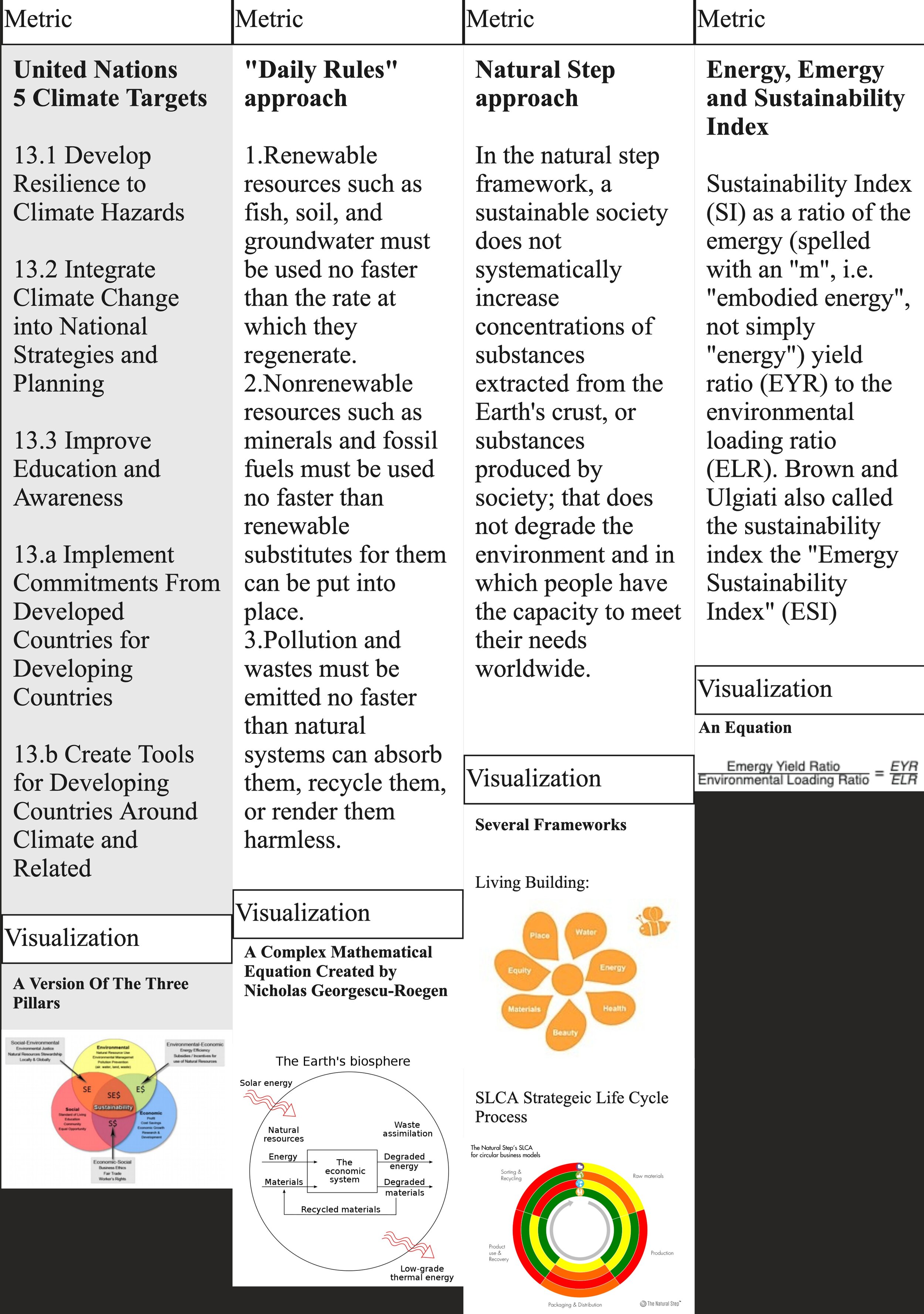My Role: develop a case study in order to decide if sustainability labelling could be addressed using UX methodologies.
Tools Used: Google Suite
Sustainability Index
The 1st Problem:
There are several reasons consumers have a hard time understanding which companies are working towards sustainable practices: firstly the issue is very complex, secondly companies have a financial interest in appearing to be sustainable "greenwashing” and lastly diverse sustainability metrics create conflicting attitudes. There is no reliable way for a consumer to know who good and bad actors are. This creates anxiety in consumers who want to do what is right for the planet but do not have the time to research every company in their lives.
The Opportunity:
Consumers would benefit greatly from a simple and universal metric that illustrates a company's awareness of their environmental impact.
Research Process
Before developing the user interviews I decided there are three categories I would need to investigate to understand my problem better:
1.User Interest - Is there interest in a centralized sustainability metric amongst consumers?
2.Sustainability Metrics - What metrics already exist?
3.Consumer Labeling - What visual strategies are currently used to inform consumers?
1.User Interest
User interest in transparency around sustainability is on the rise globally in 2020/21. This is also true of user involvement in mobile review apps, spurred on by Covid-19. None of these trends however offset the confusion around decision making when it comes to sustainable choices for consumers.
• User Concern Over Sustainable Packaging:
Second, more than half of US consumers are nonetheless highly concerned about the environmental impact of packaging in general. They worry about a wide range of issues, not one single factor, such as marine litter. Third, consumers are willing to pay more for green, but they would also buy additional sustainably packaged products if more of them were available and they were better labeled. Fourth, if you ask consumers what they want to see going forward, they are almost equally interested in recyclable and recycled plastic packaging and in fiber-based substitutes.
Mckinsey and Company, 07/01/21, https://www.mckinsey.com/industries/paper-forest-products-and-packaging/our-insights/sustainability-in-packaging-inside-the-minds-of-us-consumers
• User Review Trends:
72% of US consumers have written a review for a local business – a big jump from 66% in 2019…67% of consumers say they wouldn’t use a business if reviews said it didn’t have Covid-19 health and safety measures in place
Bright Local, 07/01/21 https://www.brightlocal.com/research/local-consumer-review-survey/
• The Complexity of User Perceptions Around “Good Choices”:
“…consumers’ perceptions of nutritional content, ecological welfare, and price attributes of organic food have strong effects on utilitarian attitudes as well as hedonic attitudes toward buying organic food, while perceptions of the sensory appeal attribute have a strong effect on hedonic attitudes.”
Science Direct, 07/01/21, https://doi.org/10.1016/j.foodqual.2014.06.002
2.Sustainability Metrics
Take Away
Most sustainability indices evaluate their chosen indicators by using one of three categories: 1. life cycle of the product (The Higg Index, DOE tools) , 2. sustainability ranked by nation (Green GDP, GPI, EPI, HDI or Ecological Footprint), and thirdly “benchmarks” to reach (UN Charter). It was difficult to find any metric for companies or individual products that extends further than a companies own internal accounting of their sustainable practices.
3.Consumer Labeling
Take Away
There is a large diversity of consumer labeling. It is unclear what exactly creates the highest level of trust for consumers in labels. Some of the choices include: simple vs. complex label, crowd sourced vs . officially certified, visually illustrative vs. informational vs. a mixed.
Next Problem…
A clear next step would be user interviews. I would focus on existing attitudes towards current labelling systems, and user review apps. I am also interested in what would create the most trust around labeling for a consumer.









